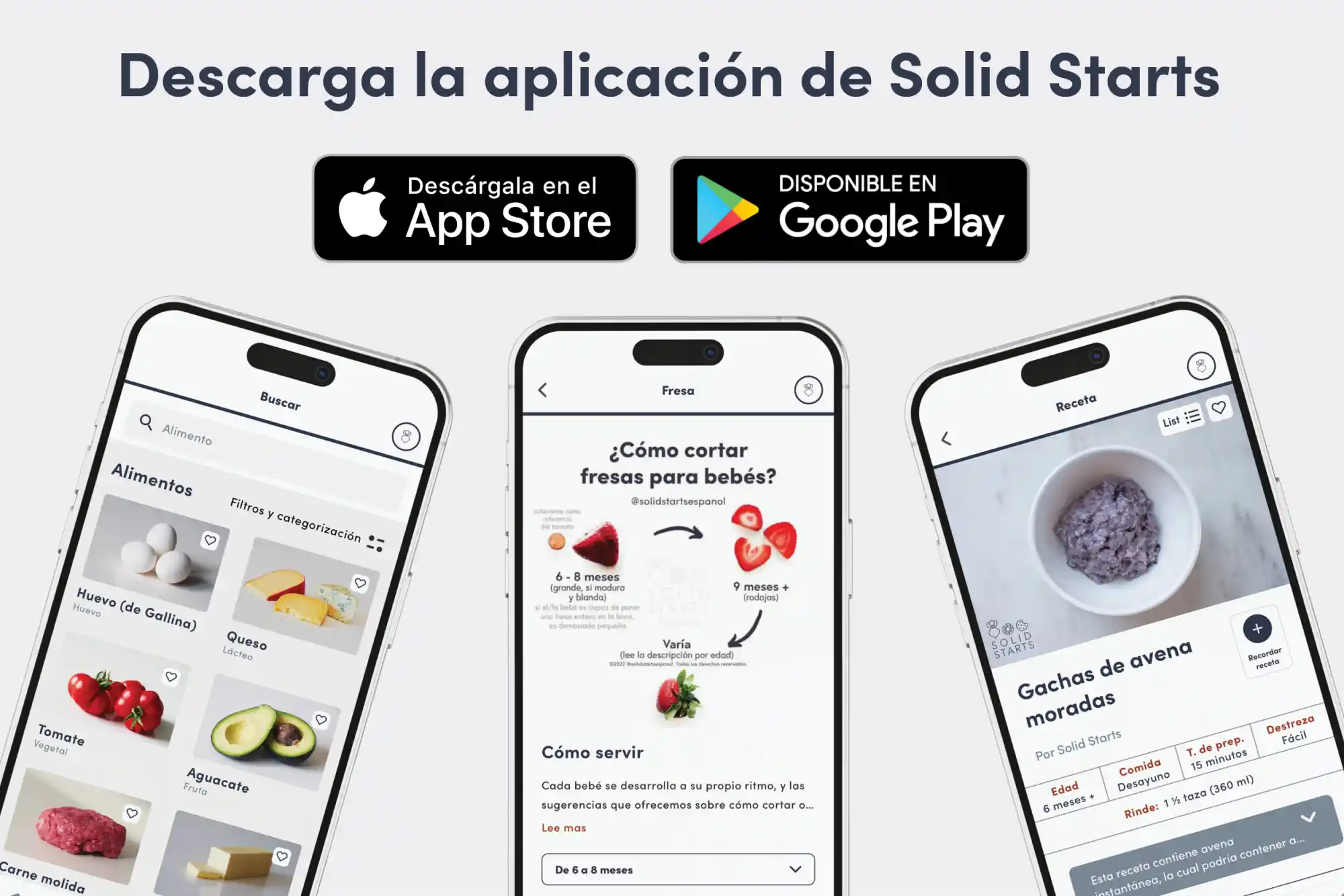Acceda a la base de datos First Foods® en Solid Starts App.
Leer másSorghum
Grano
Sugerencia de edades
6 meses
Alto contenido de hierro
No
Alérgeno común
No

When can babies have sorghum?
Sorghum may be introduced as soon as baby is ready to start solids, which is generally around 6 months old.
Native to central and south Africa, sorghum is a type of grass seed also known as great millet, milo, or jowar. Sorghum flour is a key ingredient in a fermented flatbread called injera and porridges such as tô and uji; cracked sorghum gets mixed with seasonal vegetables in jowar upma, an Indian breakfast; and popped sorghum (jowar dhani) is a popular Indian snack.
How do you serve sorghum to babies?
Cada bebé se desarrolla a su propio ritmo, y las sugerencias que ofrecemos sobre cómo cortar o preparar determinados alimentos son generalizaciones para una amplia audiencia.
6 months old +:
Make sorghum porridge and experiment with nutrient-rich cooking liquids like buttermilk, coconut milk, or vegetable stock. Combine with butter or ghee, and your preferred flavors and spices. To serve sorghum as finger food, mix the cooked grains with ground meat or mashed vegetables to make balls or fritters—shapes that are easier for baby to grab. Alternatively, serve strips of pancakes, waffles, age-appropriate baked goods, or pastas made with sorghum flour.
9 months old +:
Offer porridge, fritters, or meatballs made with cooked sorghum. When you see signs of the pincer grasp (where the thumb and index finger meet), feel free to share grain salads with baby. Flattening the grains with the back of a fork can help them stick together, which makes it easier for baby to self-feed. Alternatively, mix sorghum salads with a soft, scoopable food like mashed vegetables or yogurt. You can also serve sorghum flour pancakes or waffles in strips for practice taking bites or in bite-sized pieces to promote the pincer grasp.
12 months old +:
Offer cooked sorghum, either as finger food, as part of a grain salad, or mixed into other soft, scoopable foods. If the child struggles to pick up the grains on their own, flattening sorghum with the back of a fork can help them stick together and make them easier to pick up. Serve bread, pancakes, pasta, and other products made with sorghum flour. At this age, you can also serve popped sorghum on its own, if desired.
Videos
Is sorghum a choking hazard for babies?
No, but loose whole sorghum and popped or puffed sorghum could pose an aspiration risk (when something is breathed into the airway but doesn’t block it). To reduce the risk, prepare and serve sorghum in an age-appropriate way. As always, make sure you create a safe eating environment and stay within an arm’s reach of baby during meals. For more information on choking, visit our sections on gagging and choking and familiarize yourself with the list of common choking hazards.
Is sorghum a common allergen?
No, sorghum is not classified as a Global Priority Allergen by the World Health Organization. While allergies to pollen from a variety of sorghum grass (Sorghum halepense) have been reported, there is little information on allergies to the sorghum we eat (Sorghum bicolor).
As with introducing any new food, start by serving a small quantity for the first few servings, and if there is no adverse reaction, gradually increase the quantity over future meals.
Is sorghum healthy for babies?
Yes. Sorghum is rich in carbohydrates to provide quick energy and fiber to help baby’s gut microbiome flourish and balance blood sugar levels. It’s also rich in zinc, vitamin B6, magnesium, and selenium, as well as a dash of iron, important nutrients that baby needs for growth and development. Sorghum is full of antioxidants and polyphenols—plant nutrients that help improve the body’s resilience and recovery.
Is sorghum gluten-free?
Yes. Sorghum is gluten free, making it safe for those with wheat allergy, celiac disease, or non-celiac gluten sensitivity. Talk to a pediatric health care provider if you are concerned about issues related to gluten and digestion. See our celiac page for more information.
When can babies have popped sorghum?
Popped sorghum can be sprinkled on top of or mixed into other foods as soon as baby is ready for solids, generally around 6 months old so long as the food that it is mixed into is soft. Because of the potential for the tiny, dry, light-weight popped grains to be accidentally sucked into the airway if not mixed into other foods, we recommend avoiding serving them on their own and avoid serving it mixed into crunchy foods such as crackers or granola until after 12 months.
Are the anti-nutrients in sorghum safe for babies?
Yes. Often called anti-nutrients, these naturally-occurring plant compounds (including lectins, oxalates, and phytates) break down during the soaking and cooking process and are generally harmless in healthy people when consumed as part of a balanced diet. Some antinutrients can even offer health benefits, such as antioxidant and anti-cancer properties.
Nuestro equipo
Escrito por
Consejos de expertos directo a tu bandeja de entrada
¡Suscríbete y recibe correos semanales con recetas, consejos y más!
Copyright © 2025 • Solid Starts Inc





